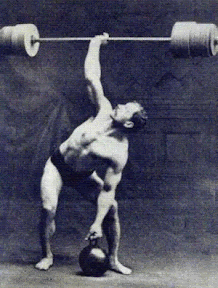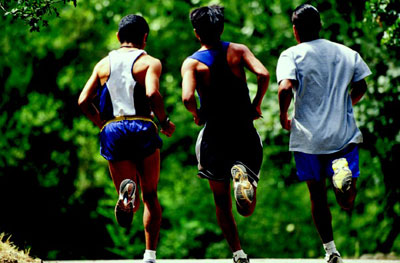When you look at a training plan for a runner you will find various types of runs to improve on the various body systems used in running. It is no secret that smart training involves sprint work, tempo runs, hills, and distance. However, to be a really strong runner and avoid injuries you must also utilize strength training.
Most runners think that running alone will make them a stronger runner. In all other sports strength training is used consistently to improve physical fitness and therefore improve sporting performance. Running is no different. Without the proper strength in key muscles your body will not be able to withstand the consistent training runs and/or the higher mileage. This is why many times people say that they only get pain once they increase to runs with higher mileage. More often than not this means that crucial muscles are fatiguing early and running form begins to deteriorate.
Keeping good form is essential to not only efficient running, but also to staying injury free.
Aside from working on technique the only way to make certain that your form stays consistent is to make sure that you have adequate muscular strength and endurance. You do not have to spend hours each day in the gym to gain running strength. However, it must become part of your training routine if you want to become a stronger runner.
The most important areas that must be addressed are the core (as a unit) and the hips. The core helps you maintain proper posture which is essential to keeping each stride efficient. The hip muscles help to keep the pelvis and legs in the correct position. If hip musculature begins to fail or fatigue then numerous injuries can and will occur. Not only do the core and hip muscles need to be strong, but they also need to have a high endurance level if you plan on doing long runs.
Understanding the importance of strength training in running is critical if you want to become a better runner. Work it into your training routine and you will find that runs will become easier and injuries will come around less often.
Join us this Saturday for a FREE Run Clinic!
If you are a runner in Southern California, you can’t afford to miss this clinic.
Details here: Costa Mesa Run Clinic
Dr Vince DiSaia is a Certified Strength and Conditioning Specialist (CSCS) and has provided personalized fitness training both privately and at fitness facilities. He attended Southern California University of Health Sciences. Four years later he received his doctorate of chiropractic from SCUHS with Magna Cum Laude honors. Since then, Dr. DiSaia has continuously sought out new ways to help his patients and clients perform their best. His expertise with the musculoskeletal system is greatly enhanced through his Full Body Certification as an Active Release Techniques (ART) Provider. He has been certified as a Kinesio Tape practitioner and is also a Certified Level 2 Medical Golf Fitness Instructor (CGFI) through the Titleist Performance Institute.



